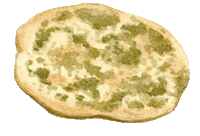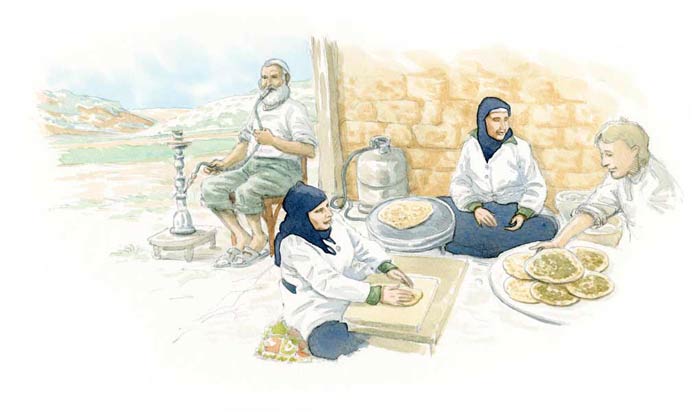Khobz

Form: Shaped like a pizza
Country of origin: Jordan and Lebanon
What distinguishes it from other methods of bread making:
Category of bread: (9) Near East equivalent of Italian pizza, which is now eaten all over the world
Particularity: Most often topped with za’atar
Ingredients: wheat flour; baker’s yeast; salt. Topping: oregano; thyme; marjoram; grilled sesame seeds; salt; olive oil

Jordan and Lebanon
In the Arab Muslim world, the word khobz simply means, in a very general manner, meaning bread in just about any form. It is used to eat with, so that your fingers never touch the food you’re eating. Khobz is therefore a griddlecake, of varying sizes and thicknesses, cooked on a saj (a type of flat or convex disc-shaped griddle) or a tannur (a vertical clay oven). It is also what carries food from the plate to the mouth ; it serves as a sort of “fork” made of bread, and sometimes as a spoon. That is why khobz is of primordial importance in Arab Muslim cultures. The peoples of the Northern Mediterranean think this bread holds a sort of “monopoly on the heart”. Can this monopoly be called into question?
Another way of making khobz dough, which can be up to 50 cm in diameter is to imagine the topping, like the topping on a ever-popular pizza. The manakich, which designates a small square of bread most often topped with za’atar, can we refer to it as a Middle Eastern pizza, found in Lebanon, Jordan and Syria?
So what exactly is za’atar ? Za’atar combines various herbs, such as oregano, thyme, marjoram, etc., mixed with grilled sesame seeds, salt and olive oil. To this, cheese can be added. When this bread if topped with ground meat, the name changes: it becomes sfiha.

